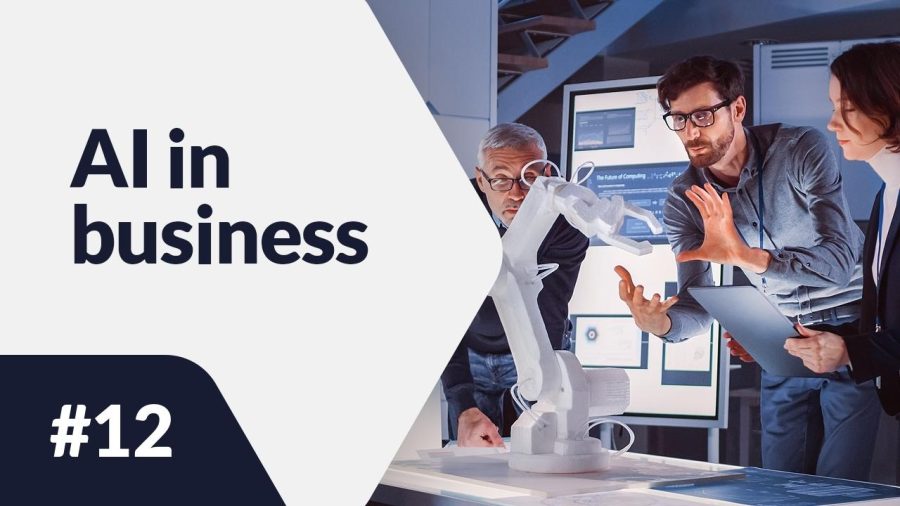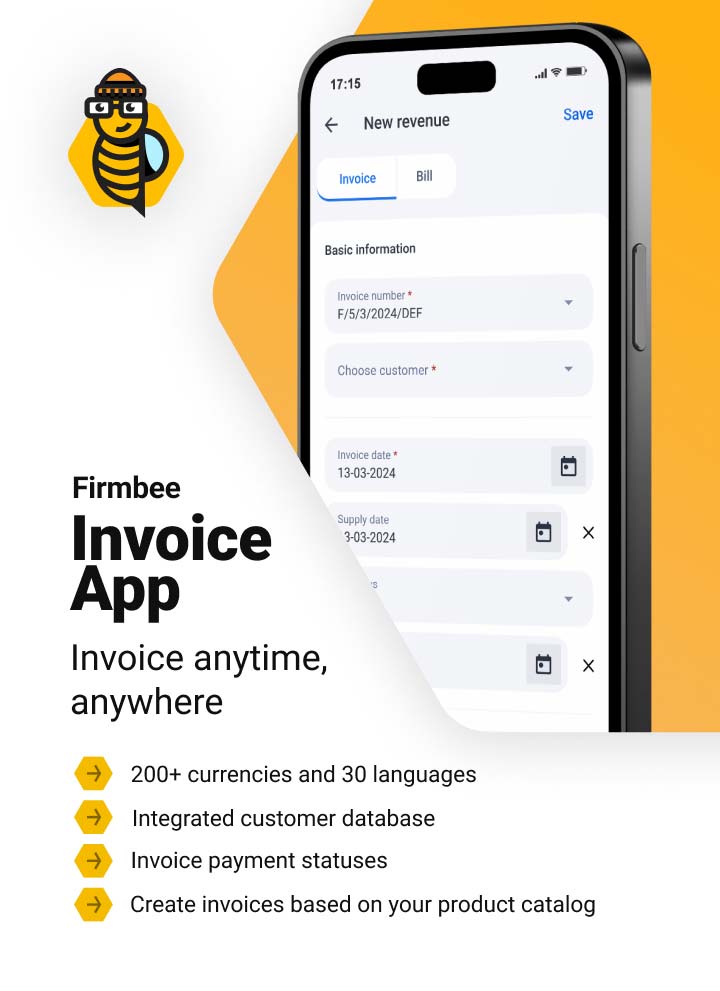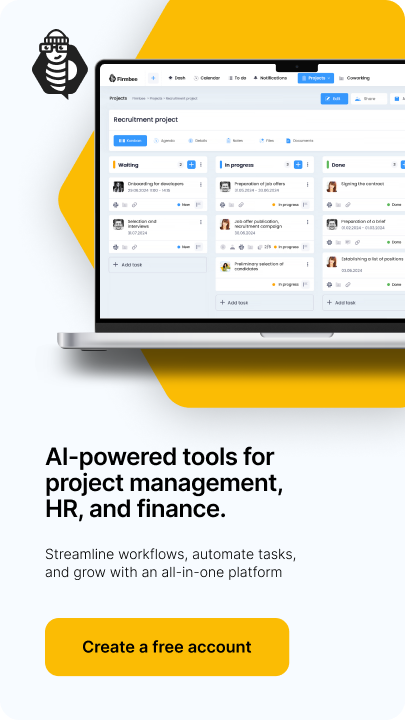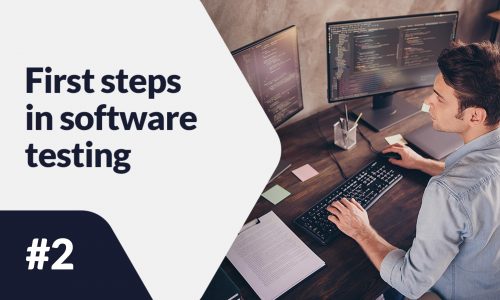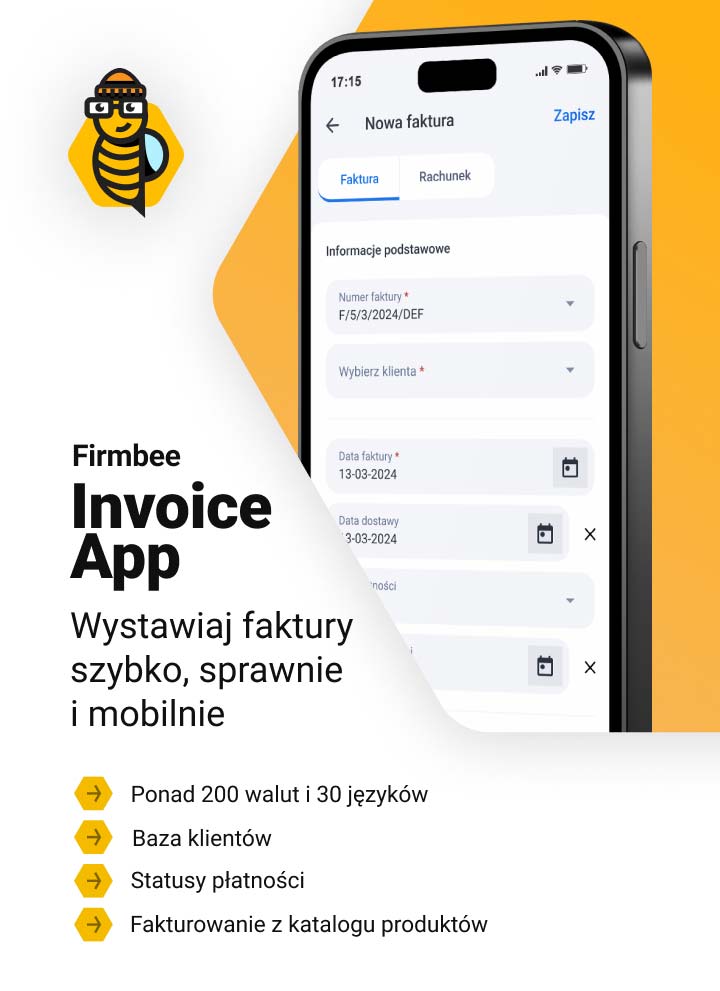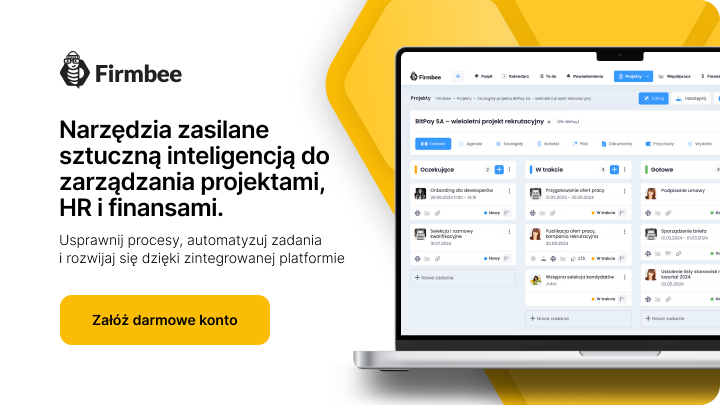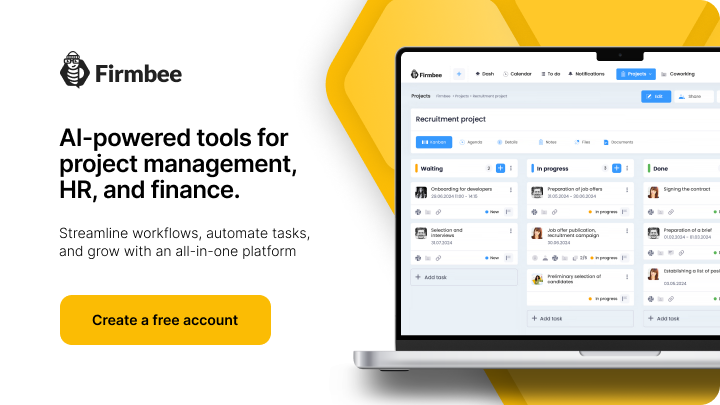The application of natural language processing (NLP) in business presents tremendous opportunities for development and automation. It applies to areas as diverse as analyzing emotional reactions in social media, where it can hint at how a brand is perceived, to voice and intuitive operation of industrial machinery. What are the prospects for NLP applications soon?
Business NLP today and tomorrow – table of contents:
Introduction
We wrote about how natural language processing works, or how machines and artificial intelligence can understand language, in this article. We’ve also already mentioned how it works for automatic document processing, social media analysis, automatic translation , and chatbots, both text and voice. Today, however, we will focus on a brief overview of other business-interest applications of NLP (Natural Language Processing). On what is available today. And also on what opportunities are opening up for NLP in the near future.
NLP in business – what can it do today?
One exciting application of NLP that is really handy in running e-commerce is text analysis. For example, analyzing product reviews posted on customer feedback sites can suggest valuable suggestions for store offerings or improvements to the products themselves. Studying customer reviews enables you to make business decisions more effectively, as well as to develop strategies that respond to customer expectations.
Text analysis is also called text mining. Because through the use of artificial intelligence, it is possible to “dig out” data and behavioral patterns from text written in a casual, natural way. These can be, for example, patterns about the frequency of purchase of specific products, or the degree of satisfaction after selection, which are not seen by humans analyzing the comments. Instead, they can provide valuable knowledge about customers. This knowledge, in turn, will make it possible to apply personalization, or data-driven marketing strategies and AI to the needs of a specific customer.
Artificial intelligence, combining analysis and text mining capabilities, is also capable of preparing accurate and factual summaries. This includes the content of business meetings, after which each participant can receive a textual note containing the most important findings. The ability to summarize texts and draw conclusions from source materials also greatly speeds up market and competitive research, as one can quickly review a larger report using notes prepared by AI taking advantage of the capabilities provided by natural language processing.
However, it is worth mentioning not only comprehension but also speech generation in a business context. Various types of chatbots and voicebots are common in the hotel and tourism industry, among others. Thanks to automatic translation and the natural voice way of communication, the use of NLP ensures excellent customer satisfaction. From choosing a hotel, booking a flight, to tourist information based on location retrieved in real-time. All of these facilities are made possible just by natural language processing.
The future of NLP in business
A washing machine that reminds you with a polite voice to finish a program, or a refrigerator that reminds you to refill your supply of orange juice are solutions available today. The world around us will talk more and more: the Internet of Things (IoT) and the rapid development of artificial intelligence are making sensors and voice interactions ubiquitous.
Future analysis of natural language may include not only written and spoken utterances but also accompanying signs that express emotions. In spoken language, this will include volume and tone of voice, as well as the pace of speech. And in colloquial written language – analysis of posted emoticons, memes or images. An even greater field for analysis opens up when an utterance is analyzed from a video recording, where the person or person speaking can be seen.
If the analysis of nonverbal communication, supported by artificial intelligence, is part of NLP, there is the way to understand not only the meaning of an utterance but also its intention. Non-verbal communication opens the field for interpreting behaviors and attitudes that convey meaning, accompanying emotions, and indicate the purpose of the message. NLP combined with image analysis (computer vision) will enable interpretation of the meaning of facial expressions, movements as well as gestures. And AI-supported analytical tools will draw additional conclusions about when and where customers are interested in a product or service.
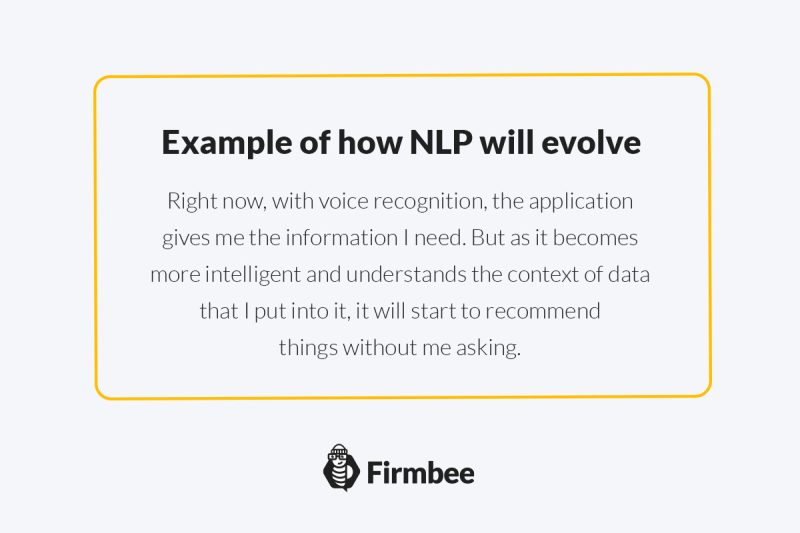
Summary
The words of Albert Mehrabian accompany our analysis of natural language processing: Human communication is only 7% based on information conveyed through words. The tone of the voice 38% is determined by and as much as 55% is non-verbal communication. Those involved in natural language processing and its connections to other branches of artificial intelligence also know this. We will definitely marvel at what conclusions the fast-learning AI will soon draw from our behavior and gestures.
If you like our content, join our busy bees community on Facebook, Twitter, LinkedIn, Instagram, YouTube, Pinterest.
Author: Robert Whitney
JavaScript expert and instructor who coaches IT departments. His main goal is to up-level team productivity by teaching others how to effectively cooperate while coding.
AI in business:
- Threats and opportunities of AI in business (part 1)
- Threats and opportunities of AI in business (part 2)
- AI applications in business - overview
- AI-assisted text chatbots
- Business NLP today and tomorrow
- The role of AI in business decision-making
- Scheduling social media posts. How can AI help?
- Automated social media posts
- New services and products operating with AI
- What are the weaknesses of my business idea? A brainstorming session with ChatGPT
- Using ChatGPT in business
- Synthetic actors. Top 3 AI video generators
- 3 useful AI graphic design tools. Generative AI in business
- 3 awesome AI writers you must try out today
- Exploring the power of AI in music creation
- Navigating new business opportunities with ChatGPT-4
- AI tools for the manager
- 6 awesome ChatGTP plugins that will make your life easier
- 3 grafików AI. Generatywna sztuczna inteligencja dla biznesu
- What is the future of AI according to McKinsey Global Institute?
- Artificial intelligence in business - Introduction
- What is NLP, or natural language processing in business
- Automatic document processing
- Google Translate vs DeepL. 5 applications of machine translation for business
- The operation and business applications of voicebots
- Virtual assistant technology, or how to talk to AI?
- What is Business Intelligence?
- Will artificial intelligence replace business analysts?
- How can artificial intelligence help with BPM?
- AI and social media – what do they say about us?
- Artificial intelligence in content management
- Creative AI of today and tomorrow
- Multimodal AI and its applications in business
- New interactions. How is AI changing the way we operate devices?
- RPA and APIs in a digital company
- The future job market and upcoming professions
- AI in EdTech. 3 examples of companies that used the potential of artificial intelligence
- Artificial intelligence and the environment. 3 AI solutions to help you build a sustainable business
- AI content detectors. Are they worth it?
- ChatGPT vs Bard vs Bing. Which AI chatbot is leading the race?
- Is chatbot AI a competitor to Google search?
- Effective ChatGPT Prompts for HR and Recruitment
- Prompt engineering. What does a prompt engineer do?
- AI Mockup generator. Top 4 tools
- AI and what else? Top technology trends for business in 2024
- AI and business ethics. Why you should invest in ethical solutions
- Meta AI. What should you know about Facebook and Instagram's AI-supported features?
- AI regulation. What do you need to know as an entrepreneur?
- 5 new uses of AI in business
- AI products and projects - how are they different from others?
- AI-assisted process automation. Where to start?
- How do you match an AI solution to a business problem?
- AI as an expert on your team
- AI team vs. division of roles
- How to choose a career field in AI?
- Is it always worth it to add artificial intelligence to the product development process?
- AI in HR: How recruitment automation affects HR and team development
- 6 most interesting AI tools in 2023
- 6 biggest business mishaps caused by AI
- What is the company's AI maturity analysis?
- AI for B2B personalization
- ChatGPT use cases. 18 examples of how to improve your business with ChatGPT in 2024
- Microlearning. A quick way to get new skills
- The most interesting AI implementations in companies in 2024
- What do artificial intelligence specialists do?
- What challenges does the AI project bring?
- Top 8 AI tools for business in 2024
- AI in CRM. What does AI change in CRM tools?
- The UE AI Act. How does Europe regulate the use of artificial intelligence
- Sora. How will realistic videos from OpenAI change business?
- Top 7 AI website builders
- No-code tools and AI innovations
- How much does using AI increase the productivity of your team?
- How to use ChatGTP for market research?
- How to broaden the reach of your AI marketing campaign?
- "We are all developers". How can citizen developers help your company?
- AI in transportation and logistics
- What business pain points can AI fix?
- Artificial intelligence in the media
- AI in banking and finance. Stripe, Monzo, and Grab
- AI in the travel industry
- How AI is fostering the birth of new technologies
- The revolution of AI in social media
- AI in e-commerce. Overview of global leaders
- Top 4 AI image creation tools
- Top 5 AI tools for data analysis
- AI strategy in your company - how to build it?
- Best AI courses – 6 awesome recommendations
- Optimizing social media listening with AI tools
- IoT + AI, or how to reduce energy costs in a company
- AI in logistics. 5 best tools
- GPT Store – an overview of the most interesting GPTs for business
- LLM, GPT, RAG... What do AI acronyms mean?
- AI robots – the future or present of business?
- What is the cost of implementing AI in a company?
- How can AI help in a freelancer’s career?
- Automating work and increasing productivity. A guide to AI for freelancers
- AI for startups – best tools
- Building a website with AI
- OpenAI, Midjourney, Anthropic, Hugging Face. Who is who in the world of AI?
- Eleven Labs and what else? The most promising AI startups
- Synthetic data and its importance for the development of your business
- Top AI search engines. Where to look for AI tools?
- Video AI. The latest AI video generators
- AI for managers. How AI can make your job easier
- What’s new in Google Gemini? Everything you need to know
- AI in Poland. Companies, meetings, and conferences
- AI calendar. How to optimize your time in a company?
- AI and the future of work. How to prepare your business for change?
- AI voice cloning for business. How to create personalized voice messages with AI?
- Fact-checking and AI hallucinations
- AI in recruitment – developing recruitment materials step-by-step
- Midjourney v6. Innovations in AI image generation
- AI in SMEs. How can SMEs compete with giants using AI?
- How is AI changing influencer marketing?
- Is AI really a threat to developers? Devin and Microsoft AutoDev
- AI chatbots for e-commerce. Case studies
- Best AI chatbots for ecommerce. Platforms
- How to stay on top of what's going on in the AI world?
- Taming AI. How to take the first steps to apply AI in your business?
- Perplexity, Bing Copilot, or You.com? Comparing AI search engines
- ReALM. A groundbreaking language model from Apple?
- AI experts in Poland
- Google Genie — a generative AI model that creates fully interactive worlds from images
- Automation or augmentation? Two approaches to AI in a company
- LLMOps, or how to effectively manage language models in an organization
- AI video generation. New horizons in video content production for businesses
- Best AI transcription tools. How to transform long recordings into concise summaries?
- Sentiment analysis with AI. How does it help drive change in business?
- The role of AI in content moderation
